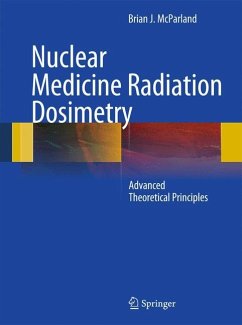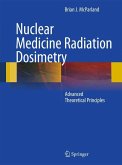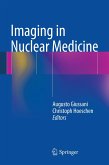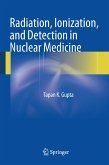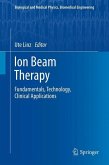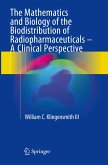Complexities of the requirements for accurate radiation dosimetry evaluation in both diagnostic and therapeutic nuclear medicine (including PET) have grown over the past decade. This is due primarily to four factors: Growing consideration of accurate patient-specific treatment planning for radionuclide therapy as a means of improving the therapeutic benefit, development of more realistic anthropomorphic phantoms and their use in estimating radiation transport and dosimetry in patients, Design and use of advanced Monte Carlo algorithms in calculating the above-mentioned radiation transport and dosimetry which require the user to have a thorough understanding of the theoretical principles used in such algorithms, their appropriateness and their limitations, increasing regulatory scrutiny of the radiation dose burden borne by nuclear medicine patients in the clinic and in the development of new radiopharmaceuticals, thus requiring more accurate and robust dosimetry evaluations.An element common to all four factors is the need for precise radiation dosimetry in nuclear medicine, which is fundamental to the therapeutic success of a patient undergoing radionuclide therapy and to the safety of the patients undergoing diagnostic nuclear medicine and PET procedures.
As the complexity of internal radiation dosimetry applied to diagnostic and therapeutic nuclear medicine increases, this book will provide the theoretical foundations for: enabling the practising nuclear medicine physicist to understand the dosimetry calculations being used and their limitations, allowing the research nuclear medicine physicist to critically examine the internal radiation dosimetry algorithms available and under development; and providing the developers of Monte Carlo codes for the transport of radiation resulting from internal radioactive sources with the only comprehensive and definitive.
As the complexity of internal radiation dosimetry applied to diagnostic and therapeutic nuclear medicine increases, this book will provide the theoretical foundations for: enabling the practising nuclear medicine physicist to understand the dosimetry calculations being used and their limitations, allowing the research nuclear medicine physicist to critically examine the internal radiation dosimetry algorithms available and under development; and providing the developers of Monte Carlo codes for the transport of radiation resulting from internal radioactive sources with the only comprehensive and definitive.
From the reviews:
"'This book is a highly specialised text focussing largely on the theory for determining radiation doses received by the human body. As such it's of specific interest to the medical physicist. It's well-structured with good organisation of material. It's clearly presented and well-researched with current view points, accurate references and interesting footnotes. ... it would also serve as a useful reference text for the radiologists, nuclear medicine physicians and also for the laity.'" (BMA Medical Book Awards, September, 2011)
"The topics of the chapters follow a logical progression and cover the theoretic issues in radiation dosimetry in nuclear medicine with sufficient breadth. ... This is a book intended for physicists in nuclear medicine. The book indeed provides good theoretic backgrounds for medical physicists looking for a refresher and for physics student training in nuclear medicine." (Franklin C. Wong, The Journal of Nuclear Medicine, Vol. 52 (5), May, 2011)
"This is a rigorous, comprehensive exposition of the theoretical basis of internal radionuclide (i.e. nuclear medicine) radiation dosimetry.
This book is altogether unique in the internal radionuclide dosimetry literature, distinguished by its mathematical rigor, emphasis on the advanced theoretical underpinnings of internal dosimetry, and notable lack (by design) of practical dose calculation algorithms and reference data. It is for specialists in the field and, as stated in the preface, it is an adjunct to, not a replacement for, existing standard publications on internal dosimetry...this is a heroic effort that fills a heretofore unaddressed gap in the internal dosimetry literature."
Pat Zanzonico, Memorial Sloan-Kettering Cancer Center
"This large and impressive textbook is not for the fainthearted. It presents fundamental theoretical considerations in a logical and systematic manner. Thebook will appeal to those with a high level of mathematical proficiency who wish to understand the subject matter in depth."
RAD Magazine, March 2011
"The publication is mainly addressed to professionals, i.e. physicists and physicians involved in nuclear medicine, with a particular interest in radionuclide therapy; but there is also an in-depth and updated evaluation of many other issues related to research and diagnostic imaging, enlarging the editorial interest to the whole collectivity of nuclear physicians, to radiologists, residents and technologists who want to deepen the study of radiation exposure ... . a reference publication that has to be present in the library of all nuclear medicine departments." (Annarita Ianniello and Luigi Mansi, European Journal of Nuclear Molecular Imaging, Vol. 38, 2011)
"'This book is a highly specialised text focussing largely on the theory for determining radiation doses received by the human body. As such it's of specific interest to the medical physicist. It's well-structured with good organisation of material. It's clearly presented and well-researched with current view points, accurate references and interesting footnotes. ... it would also serve as a useful reference text for the radiologists, nuclear medicine physicians and also for the laity.'" (BMA Medical Book Awards, September, 2011)
"The topics of the chapters follow a logical progression and cover the theoretic issues in radiation dosimetry in nuclear medicine with sufficient breadth. ... This is a book intended for physicists in nuclear medicine. The book indeed provides good theoretic backgrounds for medical physicists looking for a refresher and for physics student training in nuclear medicine." (Franklin C. Wong, The Journal of Nuclear Medicine, Vol. 52 (5), May, 2011)
"This is a rigorous, comprehensive exposition of the theoretical basis of internal radionuclide (i.e. nuclear medicine) radiation dosimetry.
This book is altogether unique in the internal radionuclide dosimetry literature, distinguished by its mathematical rigor, emphasis on the advanced theoretical underpinnings of internal dosimetry, and notable lack (by design) of practical dose calculation algorithms and reference data. It is for specialists in the field and, as stated in the preface, it is an adjunct to, not a replacement for, existing standard publications on internal dosimetry...this is a heroic effort that fills a heretofore unaddressed gap in the internal dosimetry literature."
Pat Zanzonico, Memorial Sloan-Kettering Cancer Center
"This large and impressive textbook is not for the fainthearted. It presents fundamental theoretical considerations in a logical and systematic manner. Thebook will appeal to those with a high level of mathematical proficiency who wish to understand the subject matter in depth."
RAD Magazine, March 2011
"The publication is mainly addressed to professionals, i.e. physicists and physicians involved in nuclear medicine, with a particular interest in radionuclide therapy; but there is also an in-depth and updated evaluation of many other issues related to research and diagnostic imaging, enlarging the editorial interest to the whole collectivity of nuclear physicians, to radiologists, residents and technologists who want to deepen the study of radiation exposure ... . a reference publication that has to be present in the library of all nuclear medicine departments." (Annarita Ianniello and Luigi Mansi, European Journal of Nuclear Molecular Imaging, Vol. 38, 2011)

